
AI: Friend, Foe, or CEO? 5 Trends in 2025
December 30, 2024•8 mins read
For most businesses, AI applications have ceased to be just a nice-to-have feature. In 2024, the adoption of AI solutions by companies has been on a steep rise, with 72% of organizations having integrated AI into at least one business function, according to Statista. Still, this transformation isn’t just about having the latest AI tools in place, believes Emanuelis Norbutas, CTO at Tesonet and nexos.ai. According to him, a successful AI strategy should rely on the ability to effectively manage and integrate these tools across multiple layers. Read on to learn more about this and other trends that will shape the future of enterprise AI in 2025.
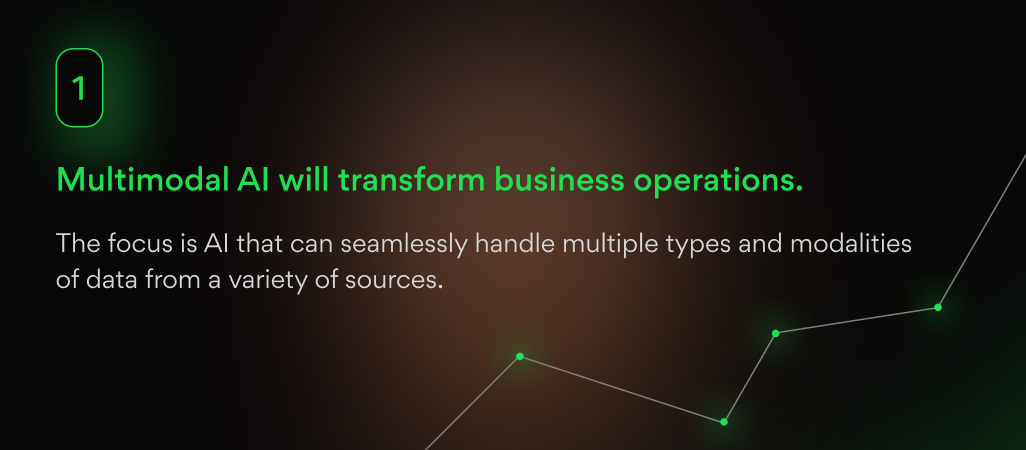
Multimodal AI transforms business operations
Businesses across the world have embraced a wide range of single-purpose AI systems – from those generating compelling reports to those streamlining such basic operations as email. Having tested the waters, companies are now ready to take their AI game to the next level. In 2025, we’ll see businesses adopt AI that can seamlessly handle multiple types and modalities of data from a variety of sources, including unstructured data (voice instructions, video materials), sensor readings, and so on. This next-level flexibility will fundamentally change the way businesses operate.
“What makes these new capabilities particularly exciting for B2B applications is their impact on overall efficiency and productivity,” says Emanuelis. “When your AI can comprehend context from multiple sources – like a sales call recording combined with user data and support tickets – you can expect more accurate insights and take more impactful actions.”
Different industries have already started their adoption journeys, and each of them will likely bring about distinct and unique solutions. For example, financial institutions are deploying multimodal AI to gauge market sentiment, taking into account not just published reports but also video conferences, earnings calls, and social media. Manufacturing companies, on the other hand, are combining sensor data, maintenance logs, and visual inspections not only to predict equipment failures before they happen but also to generate human-understandable reports and explanations.
However, implementing multimodal AI brings new challenges for businesses. “Many companies have vast amounts of different types of data, but they’re struggling to bring it all together in a way that AI can effectively use,” Emanuelis explains. “In 2025, we’ll see a growing focus on building the right infrastructure to support these more sophisticated AI capabilities.”
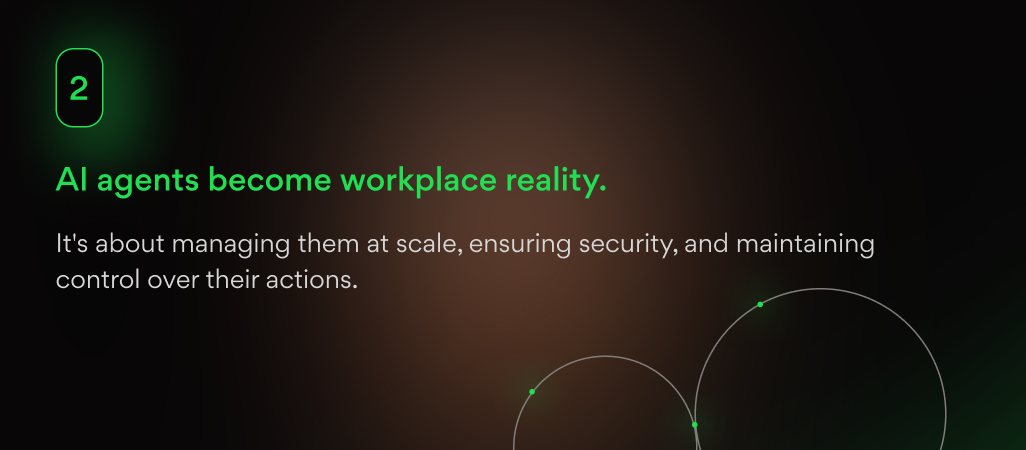
AI agents become workplace reality
The coming year will see the emergence of sophisticated AI agents – systems capable of interacting with business software much like human employees. Recent breakthroughs from the likes of Anthropic (the company behind Claude) show what’s possible. Their latest AI model can now (albeit imperfectly) perform a whole array of computer-based tasks: from searching the web and creating calendar events to writing and testing code. While current success rates for complex tasks (around 15% compared to human performance of 75%) show there’s still work to be done, the roadmap is clear.
OpenAI’s recently unveiled o3 model demonstrates the rapid progress in this field. The model has achieved unprecedented performance in programming tasks, earning a “Grandmaster” rating of 2700+ on CodeForces – a feat achieved by only the top programmers globally (hence the chess analogy). Even more impressively, o3 scored 87.5% on the ARC benchmark (designed to test intelligent task adaptation), significantly outperforming existing models like Claude 3.5’s 53%. While o3’s high computational requirements currently limit its business applications, the upcoming “o3-mini” version should become feasible for enterprises.
“We’re at a tipping point, and soon AI will be able to quickly learn how to use existing business tools efficiently,” says Emanuelis. “AI can now help with labor-intensive tasks, from data entry and analysis to complex workflow automation, saving hundreds if not thousands of hours of valuable time that human specialists can direct toward more meaningful pursuits.”
Industry mainstays and newcomers are racing to develop and deploy next-gen AI agents across both B2B and B2C verticals. Google is developing Project Jarvis to automate web-based tasks in Chrome, while Microsoft’s Copilot Vision aims to help users interact with web content more naturally. Apple is expected to release its own screen-aware AI assistant in the coming year, and OpenAI is reportedly developing similar capabilities. This widespread investment by tech giants signals that AI agents will soon become as commonplace as chatbots are today. And the need to orchestrate them will be more acute than ever before.
“The challenge isn’t just about implementing individual AI agents,” Norbutas notes. “It’s about managing them at scale, ensuring security, and maintaining control over their actions. In the agentic AI era, companies need to think carefully about their infrastructure and governance frameworks before deploying these powerful tools. This is a topic we’ve been laser-focused on here at Tesonet, and the orchestration solution we’ve been working on has the potential to truly disrupt the industry.”
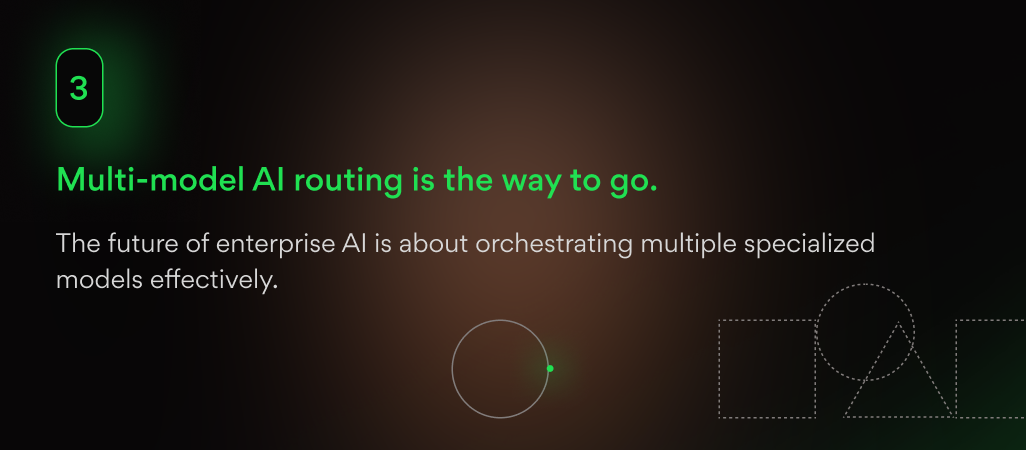
Multi-model AI routing is the way to go
As businesses scale their AI operations, relying on a single AI model or provider can prove to be risky or simply inefficient. After all, no matter how universal an LLM model is advertised to be, each of them has its own strengths and weaknesses.
“The future of enterprise AI isn’t about finding a model that works like a Swiss army knife, but about orchestrating multiple specialized models effectively,” says Emanuelis Norbutas. “Some models excel at text analysis but struggle with code generation. Others might be faster but less accurate. The key is knowing when to use which model and how to manage them cohesively.”
This trend is already gaining traction among forward-thinking companies. Organizations are building internal platforms that can automatically route tasks to the most suitable AI model, whether it’s choosing a faster model for real-time customer interactions or a more sophisticated one for complex analysis. This approach not only optimizes performance and costs but also reduces dependency on any single AI provider.
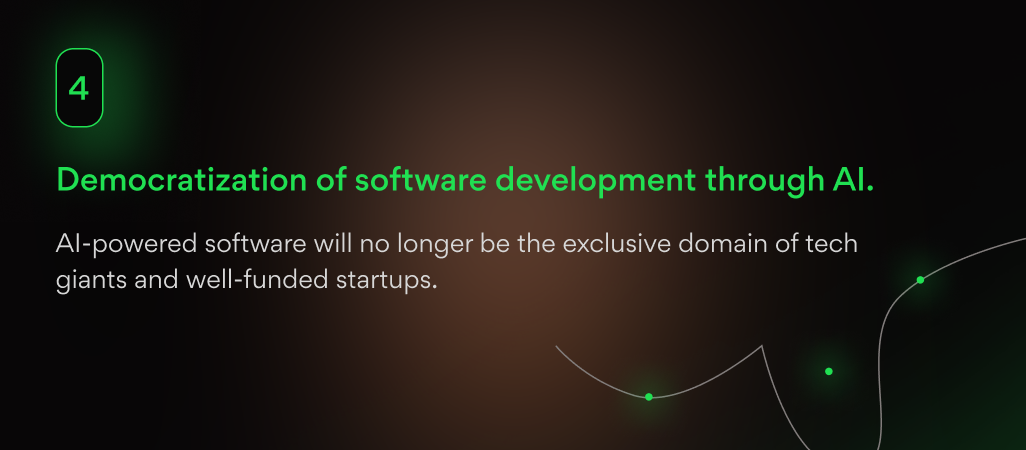
The democratization of AI and software development
In 2025, creating AI-powered software will no longer be the exclusive domain of tech giants and well-funded startups. In fact, power users inside even non-tech companies will be able to build sophisticated AI applications, fundamentally changing how businesses approach software development.
“We’re witnessing a significant shift in who can create AI-powered solutions,” says Emanuelis. “Business teams can now build and deploy AI applications without extensive coding knowledge. The market will soon be disrupted by software-building tools that will make anyone into a developer, much like Midjourney and Dall-E unlocked design capabilities for the average person.”
While most groundbreaking AI developments are coming from the US, in this particular field it’s European startups that are leading the transformation. Take Lovable, which recently secured €6.8 million in pre-seed funding for its GPT Engineer platform. Their tool allows users to describe desired features for websites and web apps in plain language, with AI generating production-ready code in real time.
This trend brings new challenges for enterprises that need to be addressed sooner rather than later. “As AI development becomes more accessible, businesses need to think about how to manage and govern these new capabilities,” Emanuelis explains. “How do you maintain security standards when any team can create and launch complex applications? How do you ensure different AI solutions work together efficiently? These are the questions that will define success in 2025.”
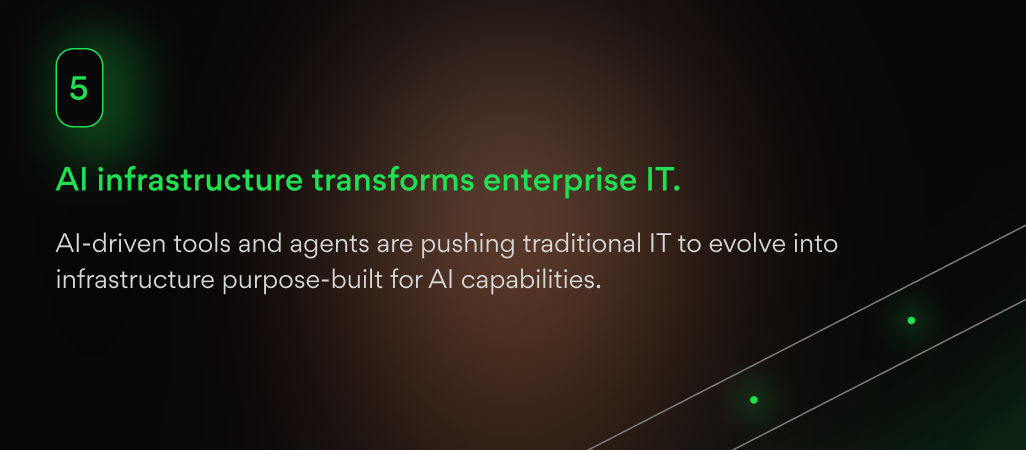
Enterprise AI infrastructure evolution
As AI capabilities expand, the underlying infrastructure needed to support them is undergoing a radical transformation. Traditional IT architectures, designed for conventional software applications, are proving inadequate for the new wave of AI-powered tools and agents.
“The infrastructure needs of AI-powered enterprises are fundamentally different,” Tesonet CTO notes. “We’re not just talking about more computing power or storage. We need systems that can handle multiple AI models running simultaneously, manage their interactions, and ensure consistent performance across the organization.”
This shift is forcing companies to rethink their entire tech stack. Cloud providers are racing to offer specialized AI infrastructure services, but the real challenge lies in creating cohesive systems that can support everything from large language models to AI agents while maintaining security and compliance.
“In 2025, the differentiator won’t be which AI tools you have, but how well you’ve integrated them,” Emanuelis explains. “Companies need orchestration layers that can manage multiple AI systems, control access, monitor usage, and ensure different AI tools work together seamlessly. Without this foundation, businesses risk creating a fragmented landscape of powerful but isolated AI capabilities.”
Looking ahead
As we move into 2025, the AI landscape in enterprise settings will be characterized by increasing sophistication and complexity. From multimodal systems and AI agents to democratized development tools and new architectural paradigms, businesses face both unprecedented opportunities and challenges.
“The companies that will succeed won’t necessarily be the ones with the most advanced AI tools,” says Emanuelis. “Success will come to those who can effectively integrate these capabilities into their operations, manage them at scale, and ensure they work together seamlessly. The era of isolated AI implementations is over.”
The message for businesses is clear: no matter how fast you are, tech moves faster, and most of us are at least a bit late already. And at the end of the day, success will be defined not by siloed AI technologies, but by having the right foundation to integrate and manage these technologies effectively.







